MANNERS
CUSTOMS
AND DRESS
DURING THE
MIDDLE AGES
AND DURING THE
RENAISSANCE
PERIOD
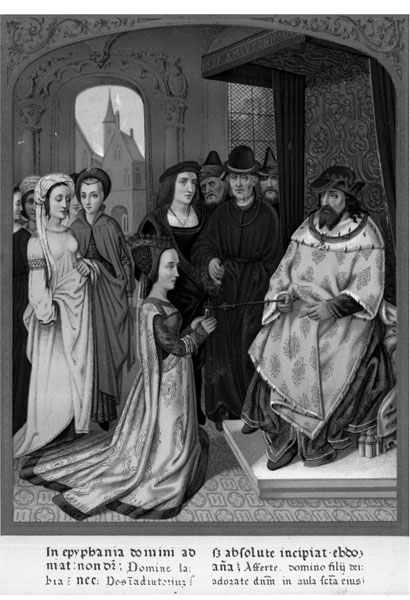
THE QUEEN OF SHEBA BEFORE SOLOMON.
(Costume of 15thcentury.)
Fac-simile of a miniature from the Breviary of the cardinal Grimani, attributed to Memling. Bibl. of S. Marc, Venice. (From a copy in the possession of M. Ambroise Firmin-Didot.)
The King inclines his sceptre towards the Queen indicating his appreciation of her person and her gifts; five ladies attend the Queen and five of the Kings courtiers stand on his right hand.
MANNERS
CUSTOMS
AND DRESS
DURING THE
MIDDLE AGES
AND DURING THE
RENAISSANCE
PERIOD
P AUL L ACROIX
ILLUSTRATIONS BY F. KELLERDOVEN

Copyright 2013 by Skyhorse Publishing, Inc.
All Rights Reserved. No part of this book may be reproduced in any manner without the express written consent of the publisher, except in the case of brief excerpts in critical reviews or articles. All inquiries should be addressed to Skyhorse Publishing, 307 West 36th Street, 11th Floor, New York, NY 10018.
Skyhorse Publishing books may be purchased in bulk at special discounts for sales promotion, corporate gifts, fund-raising, or educational purposes. Special editions can also be created to specifications. For details, contact the Special Sales Department, Skyhorse Publishing, 307 West 36th Street, 11th Floor, New York, NY 10018 or info@skyhorsepublishing.com.
Skyhorse and Skyhorse Publishing are registered trademarks of Skyhorse Publishing, Inc., a Delaware corporation.
Visit our website at www.skyhorsepublishing.com.
10 9 8 7 6 5 4 3 2 1
Library of Congress Cataloging-in-Publication Data is available on file.
ISBN: 978-1-61608-192-8
Printed in the United States of America

PREFACE.

 HE several successive editions of The Arts of the Middle Ages and Period of the Renaissance sufficiently testify to its appreciation by the public. The object of that work was to introduce the reader to a branch of learning to which access had hitherto appeared only permitted to the scientific. That attempt, which was a bold one, succeeded too well not to induce us to push our researches further. In fact, art alone cannot acquaint us entirely with an epoch. The arts, considered in their generality, are the true expressions of society. They tell us its tastes, its ideas, and its character. We thus spoke in the preface to our first work, and we find nothing to modify in this opinion. Art must be the faithful expression of a society, since it represents it by its works as it has created themundeniable witnesses of its spirit and manners for future generations. But it must be acknowledged that art is only the consequence of the ideas which it expresses; it is the fruit of civilisation, not its origin. To understand the Middle Ages and the Renaissance, it is necessary to go back to the source of its art, and to know the life of our fathers; these are two inseparable things, which entwine one another, and become complete one by the other.
HE several successive editions of The Arts of the Middle Ages and Period of the Renaissance sufficiently testify to its appreciation by the public. The object of that work was to introduce the reader to a branch of learning to which access had hitherto appeared only permitted to the scientific. That attempt, which was a bold one, succeeded too well not to induce us to push our researches further. In fact, art alone cannot acquaint us entirely with an epoch. The arts, considered in their generality, are the true expressions of society. They tell us its tastes, its ideas, and its character. We thus spoke in the preface to our first work, and we find nothing to modify in this opinion. Art must be the faithful expression of a society, since it represents it by its works as it has created themundeniable witnesses of its spirit and manners for future generations. But it must be acknowledged that art is only the consequence of the ideas which it expresses; it is the fruit of civilisation, not its origin. To understand the Middle Ages and the Renaissance, it is necessary to go back to the source of its art, and to know the life of our fathers; these are two inseparable things, which entwine one another, and become complete one by the other.
The Manners and Customs of the Middle Agesthis subject is of the greatest interest, not only to the man of science, but to the man of the world also. In it, too, we retrace not only one single period, but two periods quite distinct one from the other. In the first, the public and private customs offer a curious mixture of barbarism and civilisation. We find barbarian, Roman, and Christian customs and character in presence of each other, mixed up in the same society, and very often in the same individuals. Everywhere the most adverse and opposite tendencies display themselves. What an ardent struggle during that long period! and how full, too, of emotion is its picture! Society tends to reconstitute itself in every aspect. She wants to create, so to say, from every side, property, authority, justice, &c., &c., in a word, everything which can establish the basis of public life; and this new order of things must be established by means of the elements supplied at once by the barbarian, Roman, and Christian worlda prodigious creation, the working of which occupied the whole of the Middle Ages. Hardly does modern society, civilised by Christianity, reach the fulness of its power, than it divides itself to follow different paths. Ancient art and literature resuscitates because custom insensibly takes that direction. Under that influence, everything is modified both in private and public life. The history of the human race does not present a subject more vast or more interesting. It is a subject we have chosen to succeed our first book, and which will be followed by a similar study on the various aspects of Religious and Military Life.
This work, devoted to the vivid and faithful description of the Manners and Customs of the Middle Ages and Renaissance, answers fully to the requirements of contemporary times. We are, in fact, no longer content with the chronological narration and simple nomenclatures which formerly were considered sufficient for education. We no longer imagine that the history of our institutions has less interest than that of our wars, nor that the annals of the humbler classes are irrelevant to those of the privileged orders. We go further still. What is above all sought for in historical works nowadays is the physiognomy, the inmost character of past generations. How did our fathers live? is a daily question. What institutions had they? What were their political rights? Can you not place before us their pastimes, their hunting parties, their meals, and all sorts of scenes, sad or gay, which composed their home life? We should like to follow them in public and private occupations, and to know their manner of living hourly, as we know our own.
In a high order of ideas, what great facts serve as a foundation to our history and that of the modern world! We have first royalty, which, weak and debased under the Merovingians, rises and establishes itself energetically under Ppin and Charlemagne, to degenerate under Louis le Dbonnaire and Charles le Chauve. After having dared a second time to found the Empire of the Csars, it quickly sees its sovereignty replaced by feudal rights, and all its rights usurped by the nobles, and has to struggle for many centuries to recover its rights one by one.
Feudalism, evidently of Germanic origin, will also attract our attention, and we shall draw a rapid outline of this legislation, which, barbarian at the onset, becomes by degrees subject to the rules of moral progress. We shall ascertain that military service is the essence itself of the fief, and that thence springs feudal right. On our way we shall protest against civil wars, and shall welcome emancipation and the formation of the communes. Following the thousand details of the life of the people, we shall see the slave become serf, and the serf become peasant. We shall assist at the dispensation of justice by royalty and nobility, at the solemn sittings of parliaments, and we shall see the complicated details of a strict ceremonial, which formed an integral part of the law, develop themselves before us. The counters of dealers, fairs and markets, manufactures, commerce, and industry, also merit our attention; we must search deeply into corporations of workmen and tradesmen, examining their statutes, and initiating ourselves into their business. Fashion and dress are also a manifestation of public and private customs; for that reason we must give them particular attention.

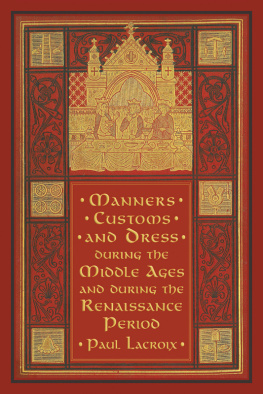


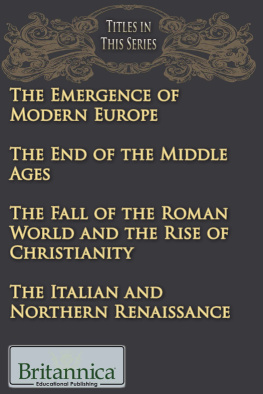
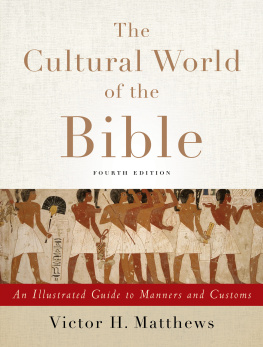

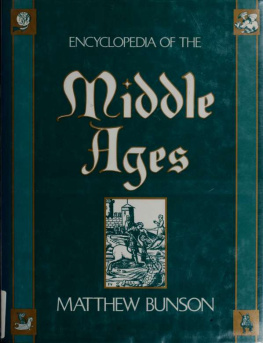




 HE several successive editions of The Arts of the Middle Ages and Period of the Renaissance sufficiently testify to its appreciation by the public. The object of that work was to introduce the reader to a branch of learning to which access had hitherto appeared only permitted to the scientific. That attempt, which was a bold one, succeeded too well not to induce us to push our researches further. In fact, art alone cannot acquaint us entirely with an epoch. The arts, considered in their generality, are the true expressions of society. They tell us its tastes, its ideas, and its character. We thus spoke in the preface to our first work, and we find nothing to modify in this opinion. Art must be the faithful expression of a society, since it represents it by its works as it has created themundeniable witnesses of its spirit and manners for future generations. But it must be acknowledged that art is only the consequence of the ideas which it expresses; it is the fruit of civilisation, not its origin. To understand the Middle Ages and the Renaissance, it is necessary to go back to the source of its art, and to know the life of our fathers; these are two inseparable things, which entwine one another, and become complete one by the other.
HE several successive editions of The Arts of the Middle Ages and Period of the Renaissance sufficiently testify to its appreciation by the public. The object of that work was to introduce the reader to a branch of learning to which access had hitherto appeared only permitted to the scientific. That attempt, which was a bold one, succeeded too well not to induce us to push our researches further. In fact, art alone cannot acquaint us entirely with an epoch. The arts, considered in their generality, are the true expressions of society. They tell us its tastes, its ideas, and its character. We thus spoke in the preface to our first work, and we find nothing to modify in this opinion. Art must be the faithful expression of a society, since it represents it by its works as it has created themundeniable witnesses of its spirit and manners for future generations. But it must be acknowledged that art is only the consequence of the ideas which it expresses; it is the fruit of civilisation, not its origin. To understand the Middle Ages and the Renaissance, it is necessary to go back to the source of its art, and to know the life of our fathers; these are two inseparable things, which entwine one another, and become complete one by the other.